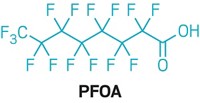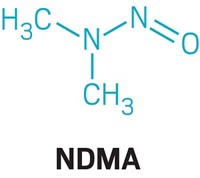Advertisement
Grab your lab coat. Let's get started
Welcome!
Welcome!
Create an account below to get 6 C&EN articles per month, receive newsletters and more - all free.
It seems this is your first time logging in online. Please enter the following information to continue.
As an ACS member you automatically get access to this site. All we need is few more details to create your reading experience.
Not you? Sign in with a different account.
Not you? Sign in with a different account.
ERROR 1
ERROR 1
ERROR 2
ERROR 2
ERROR 2
ERROR 2
ERROR 2
Password and Confirm password must match.
If you have an ACS member number, please enter it here so we can link this account to your membership. (optional)
ERROR 2
ACS values your privacy. By submitting your information, you are gaining access to C&EN and subscribing to our weekly newsletter. We use the information you provide to make your reading experience better, and we will never sell your data to third party members.
Persistent Pollutants
EU agency sets limit on PFAS in food
Recommended threshold applies to combined exposure to 4 perfluorinated substances
by Britt E. Erickson
September 17, 2020


Food regulators in the European Union have updated their guidelines for protecting consumers from per- and polyfluoroalkyl substances (PFAS) in food. The latest recommendations from the European Food Safety Authority (EFSA), released Sept. 17, set a limit for combined exposure to 4 PFAS—perfluorooctanoic acid (PFOA), perfluorooctane sulfonate (PFOS), perfluorononanoic acid (PFNA), perfluorohexane sulfonic acid (PFHxS)—in food. EFSA previously recommended individual limits for PFOA and PFOS.

EFSA’s new recommended limit for the four PFAS combined is 4.4 ng/kg body weight/week. The agency based that number on the ability of PFAS to decrease people’s immune system response to vaccinations. In contrast, in 2018 when EFSA released its previous guidance on PFAS in food, it considered increased cholesterol as the main health effect. Some people in the EU exceed the new threshold level based on blood serum data and estimated exposures, according to EFSA’s risk assessment.

PFAS are a class of synthetic chemicals found in numerous products including textiles, fire-fighting foams, electronics, and food packaging. Known for their ability to repel water and grease, PFAS also persist in the environment and contaminate many drinking water supplies. Exposure to certain PFAS is linked to immune and hormone disorders.

The four chemicals that EFSA evaluated in its risk assessment are the main PFAS in food that bioaccumulate in people, the agency says. PFAS are found in many foods, but most often in fish, fruit, and eggs, EFSA says. Diet is just one source of exposure to PFAS. Ingestion of dust and inhalation of indoor air can also be a major route, according to EFSA.
The US Food and Drug Administration evaluated 16 PFAS in produce, meat, dairy, grain, and other food products in 2019. The agency claimed that it could not make any conclusions from the data because the sample sizes were limited. Even so, it noted that there was no indication that the levels of PFAS found in food pose a risk to human health.
The FDA attributed preliminary reports of high levels of perfluoropentanoic acid in chocolate cake and chocolate milk to the use of an inaccurate analytical method. When the agency retested those products with a revised method, PFAS levels were below the detection limits.





Join the conversation
Contact the reporter
Submit a Letter to the Editor for publication
Engage with us on Twitter